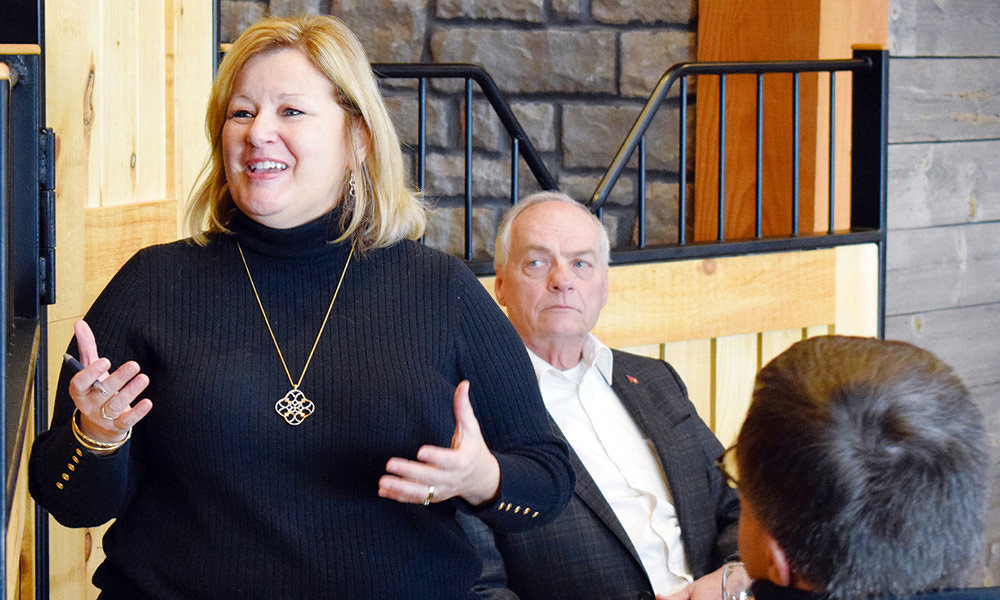Education reforms finding support, despite protests: Thompson - April 11, 2019
BY DENNY SCOTT
Huron-Bruce MPP and Minister of Education Lisa Thompson feels that, despite local and province-wide protests, her recently-unveiled education plan is finding traction with parents, students and educators.
On Tuesday morning, The Citizen spoke to Thompson in the wake of province-wide walkouts by high school students on Thursday and a large protest at Queen’s Park, organized by five unions representing education workers.
Thompson, when asked about the widespread protests, said that she had recently reinforced her commitment to quality education and students spending their school days learning through the recently passed Bill 48, which received Royal Assent on April 3. The bill, authored by Thompson, is called the Safe and Supportive Classrooms Act, which, among other things, provides amendments to existing education law, adding support for therapy and counselling of victims of sexual abuse by teachers and implementing mandatory math tests for future teachers.
She said that the reforms to education, like that bill, are based on consultation with stakeholders, which is why she says her education plan, which was unveiled on March 15 for comment, has found support from parents, students teachers and principals for its focus on the fundamentals and basics of education.
“The consultation informed us so well,” she said, referring to consultation last fall for her education plans. “That’s the way I work. I listen and I consult. That’s evident with the new curriculum and people are happy.”
Thompson addressed specific concerns raised by students at local protests in Clinton and Wingham. She said that, in terms of class sizes, there is little concern as to how it will impact education.
Class sizes won’t change for Kindergarten to Grade 3, she said, while the average class size of a Grade 4 to 8 class will increase by approximately one.
In high school, average class size will increase by six, but Thompson says that shouldn’t be a problem.
She said there are no studies to suggest that increasing class sizes will have a negative impact on education. She cited fact checking performed by the Canadian Broadcasting Company (CBC) that points to the quality of the educator in a class as being the most important decider of a quality education. Thompson went on to say that is why, as part of her education plan, investments in teachers are a priority.
Thompson also pointed out that Ontario’s average high school class size of 22 is lower than other provinces in Canada. Examples provided included Quebec with a hard-cap class size of 32, and Alberta, which has an average target of 27.
In response to student claims of Thompson not representing her constituents, she said that she is first and foremost Huron-Bruce’s MPP.
She said that, as Minister, she works for Ontario, and that has had an impact on her availability in Huron-Bruce, but her constituency offices in Blyth and Kincardine are always open. She went on to say that she “hears and sees” everything taken to those offices and that, as a Huron-Bruce representative, she is bringing a rural lens to the education policy.
Concerns about online learning are also misplaced according to Thompson, as the practice has been “incredibly well embraced” by rural and Northern Ontario, Thompson said.
She said that online courses allow students to better manage their timetables, making large-scale education undertakings like co-op more feasible, while also expanding education opportunities, which will in turn expand career choices for high school students.
She said that the primary focus, as far as preparing students for careers and further education, is focused on the STEM fields: science, technology, engineering and math, as well as skilled trades, an under-valued opportunity in Ontario.
“One of our focuses is making sure students have an increased awareness of skilled trade opportunities,” she said. “Very few high school graduates pursue the skilled trades.”
She said there are “stunning opportunities” in the field, and that sector representatives have told her there are 100,000 graduates needed to fill positions.
“There are jobs without people in the field,” she said. “We need interest and apprenticeship.”
She said that was especially true in Huron-Bruce and young people should realize these opportunities at home.
When asked about the inspirations behind the protest Thompson said, in a statement echoing Premier Doug Ford, that there are “behind-the-scene powers” inspiring these protests. In previous statements, Thompson and Ford have pointed at teachers and other education professionals as such powers.
“We’ve seen the posters and the buttons coming from ‘behind the scenes’,” she said. “What we hope is that education partners come to the table as committed as possible to making the new education plan work.”
While Thompson’s education plan was unveiled on March 15, it has yet to be enacted, and she said consultation on the document is open to education partners until May 31. She said she wants to have all feedback possible before moving forward on the curriculum.
“We need people working in good faith for student success,” she said.
When asked if the protests would have any impact on changes made to the document, she said that the government needs not just quantitative information to act on, but qualitative as well.
Highlighting her fall consultation for the education plan, in which she claims 72,000 people participated, she said her plan has been successful and followed “the proper path” to focus on students.


